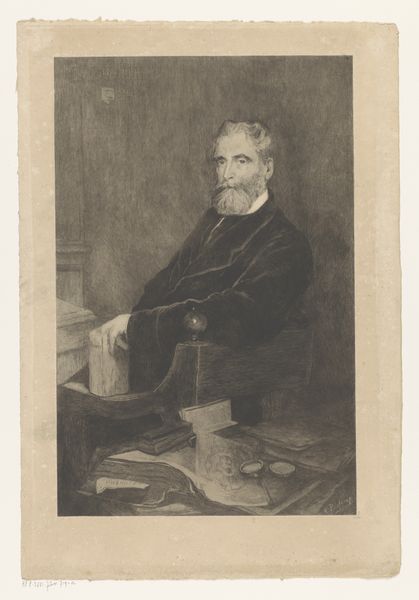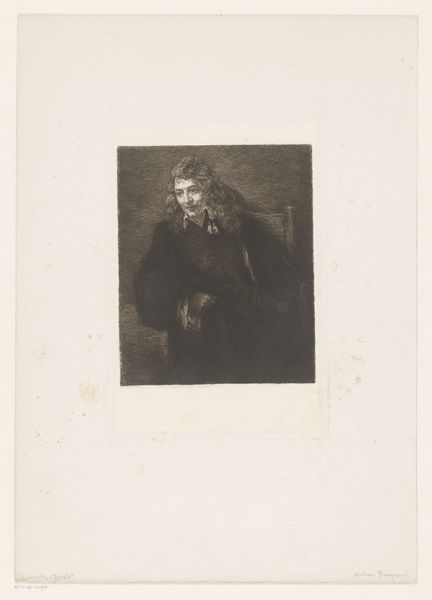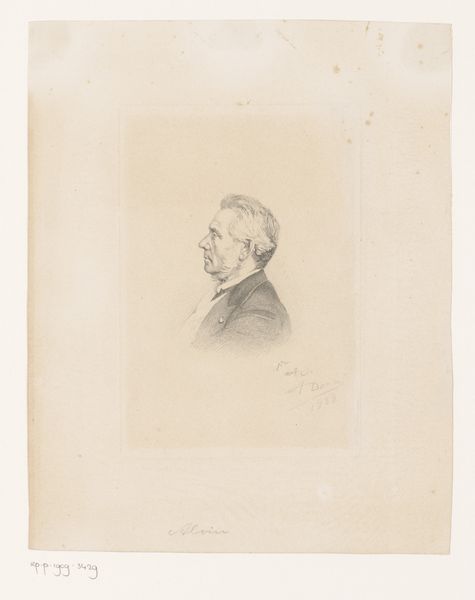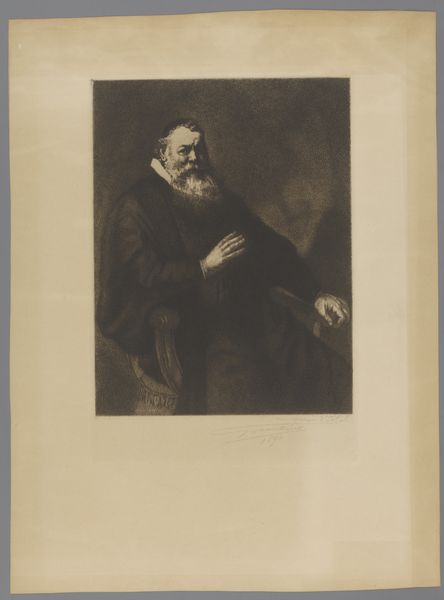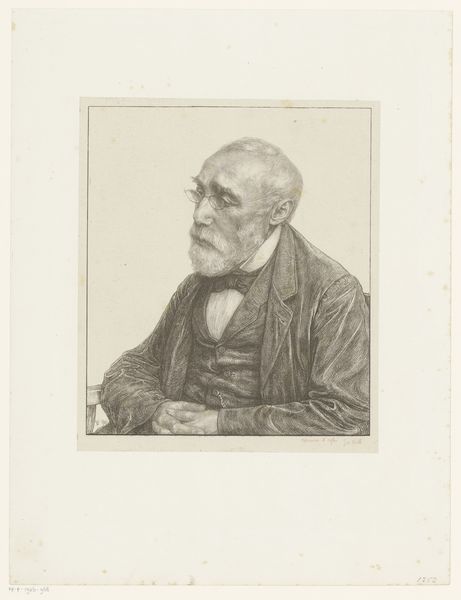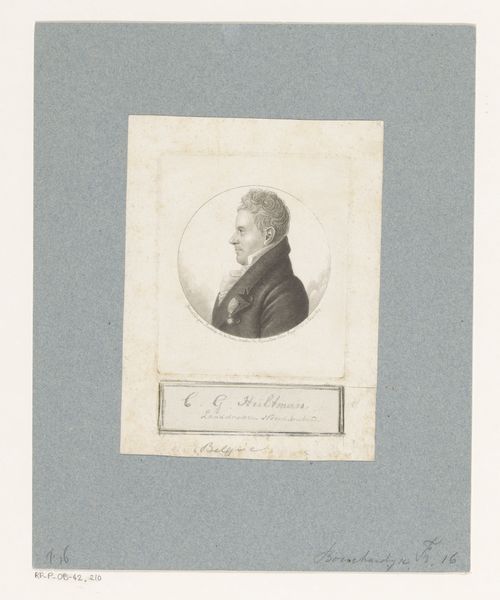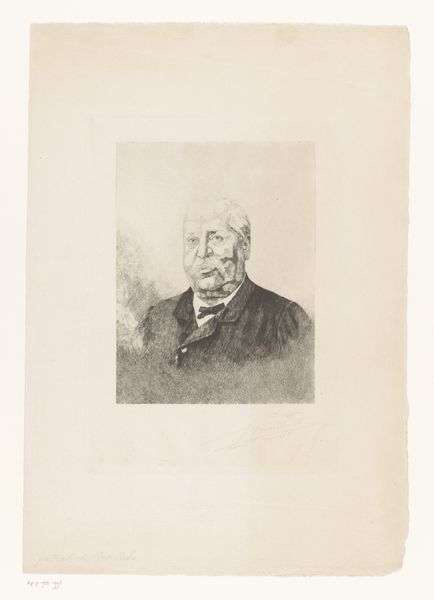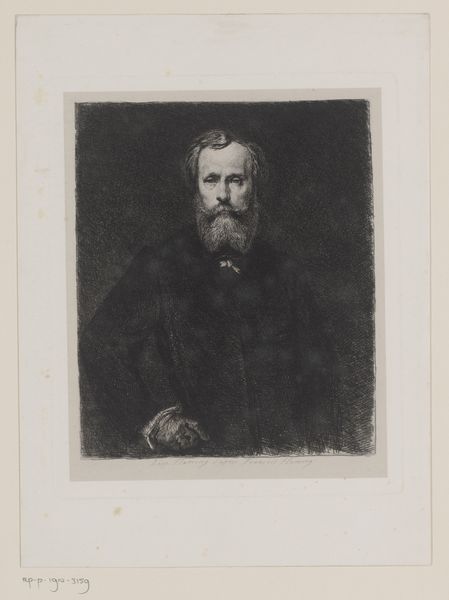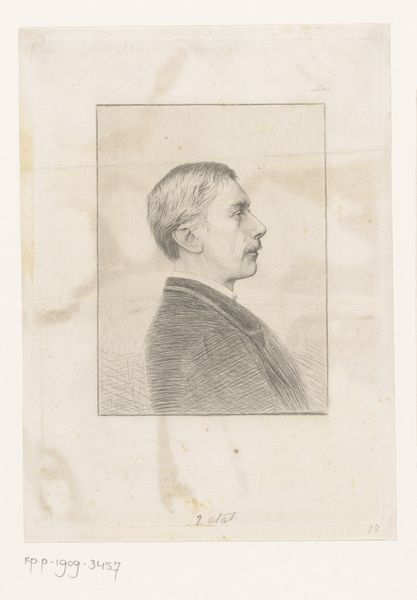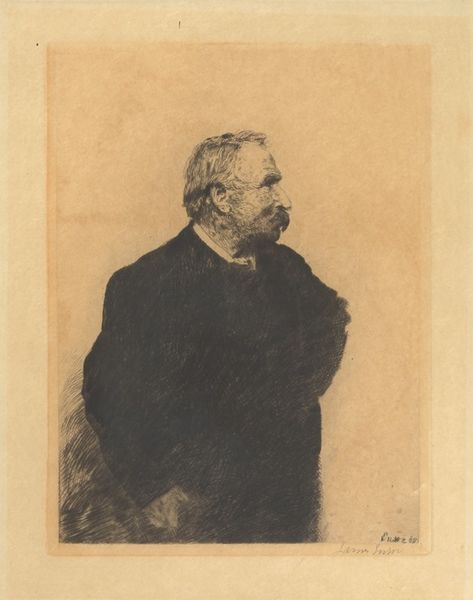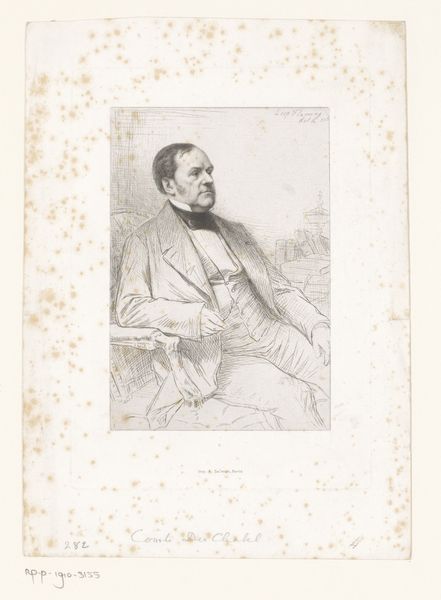
drawing, print, etching, graphite
#
portrait
#
drawing
# print
#
etching
#
graphite
#
realism
Dimensions: height 578 mm, width 380 mm
Copyright: Rijks Museum: Open Domain
Curator: It’s striking, isn't it? "Portret van John Lothrop Motley" by Philip Zilcken. An etching, a drawing, a print... I see both graphite and etching listed amongst the materials, blurring lines, maybe hinting at multiple hands or reworkings over time between 1872 and 1930, fascinatingly ambiguous! Editor: Ambiguous and serious! Look at that bearded face—I imagine it took hours to capture that. The texture, achieved through graphite and etching...you almost feel like you can touch his wool coat. Curator: The stillness, isn’t it divine? But the etching also speaks of process—etching takes labor, decisions, tools, even accidents... it begs questions about value, artistic production itself. Did the marketplace demand prints? Was it purely an act of artistic passion? Editor: It certainly speaks of Realism. Look at the folds in his jacket, the cluttered desk with books and spectacles, the papers everywhere... someone clearly deeply immersed in their work! I wonder, who was John Lothrop Motley, this person they labored to render? Curator: He was an American historian and diplomat! Quite a prominent figure. Knowing that it's not just capturing likeness but portraying intellect. But it also adds another layer – was there demand? Perhaps reproductions increased his notoriety or reach during his lifetime. Or perhaps solely an emotional decision by Zilcken. It’s difficult to interpret now. Editor: Exactly! What was Zilcken's relationship to Motley, that it lead him to chose an artform steeped in reproduction, but in a personalized manner that only a portrait enables! Were they friends? Admirers? Rivals, even? Curator: Well, these objects aren’t just objects—they're loaded, each line a potential argument. But seeing this, how different, truly, are 'high' and 'low' art when someone's heart beats beneath the etching? Perhaps that is all that matters...the exchange of emotion rendered and revived in a moment, in a place, at the Rijksmuseum. Editor: Agreed! It makes you think about all the hands that have touched this image and what the materials might reveal to the most acute eye of the historian—fascinating.
Comments
No comments
Be the first to comment and join the conversation on the ultimate creative platform.
